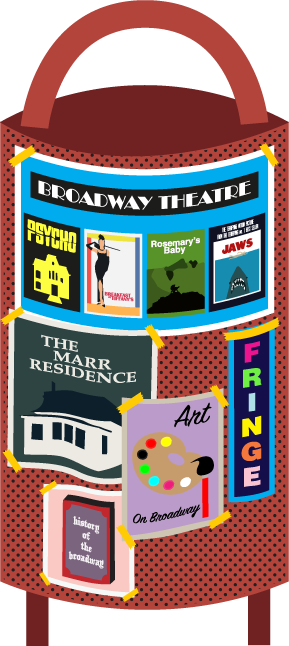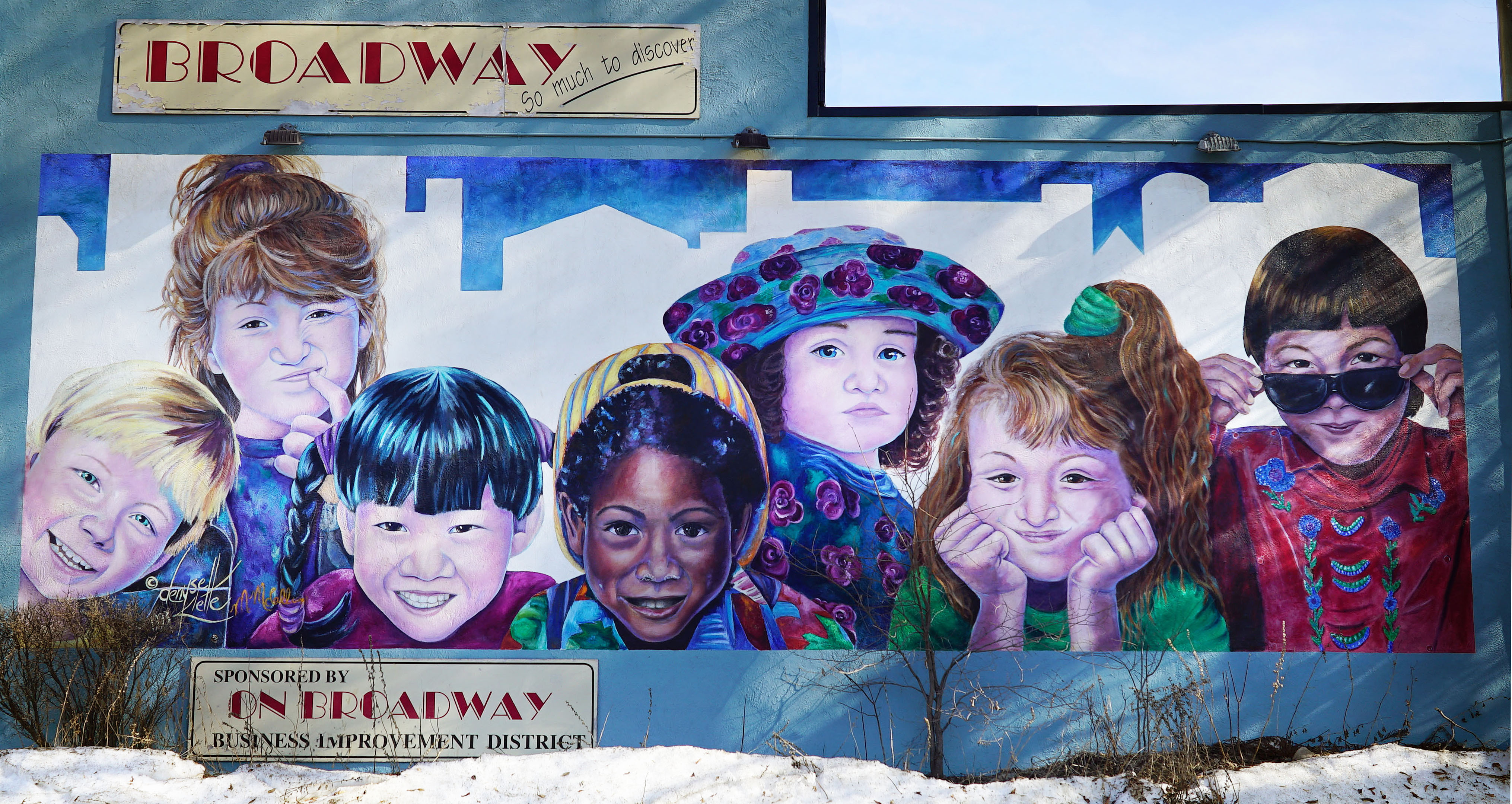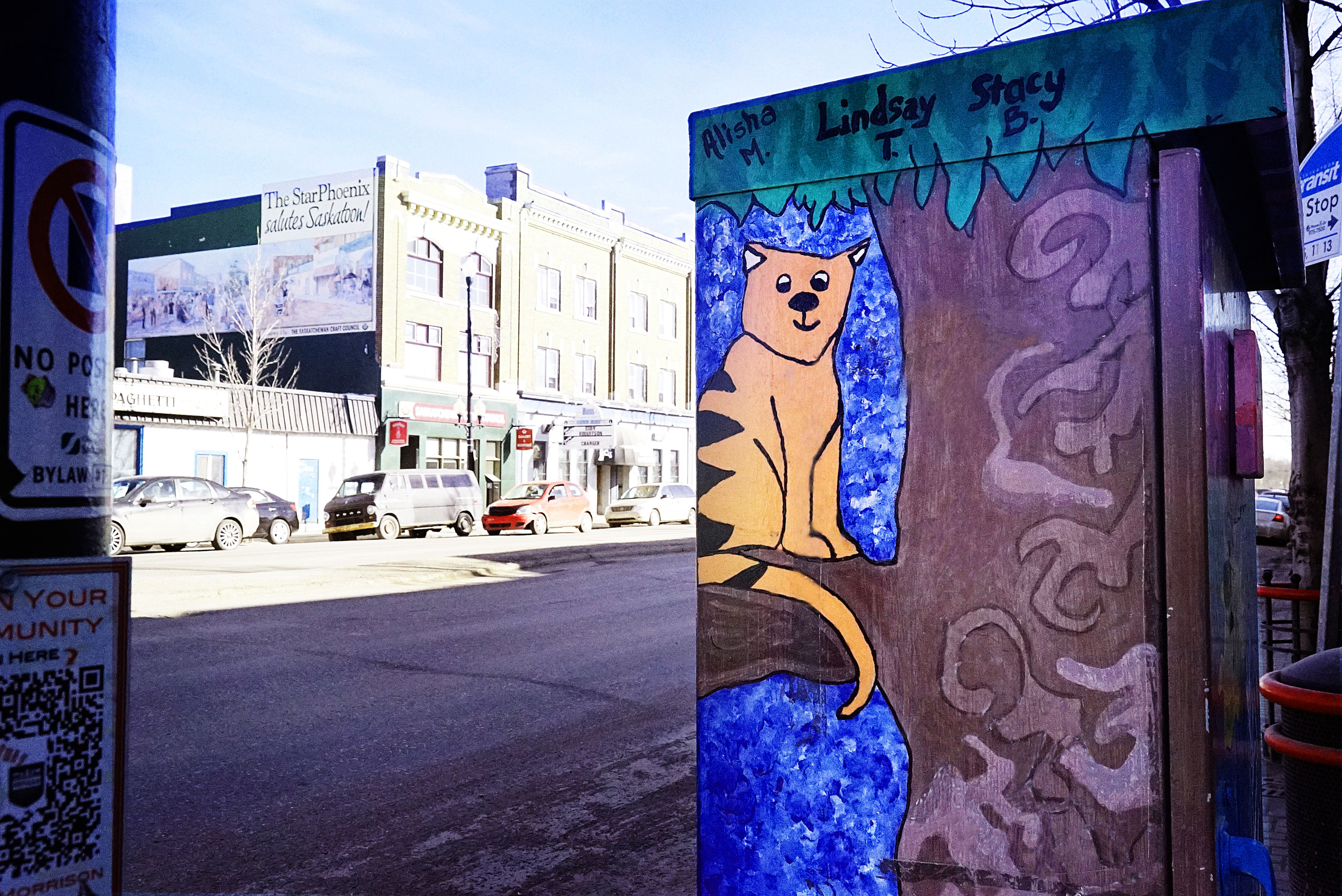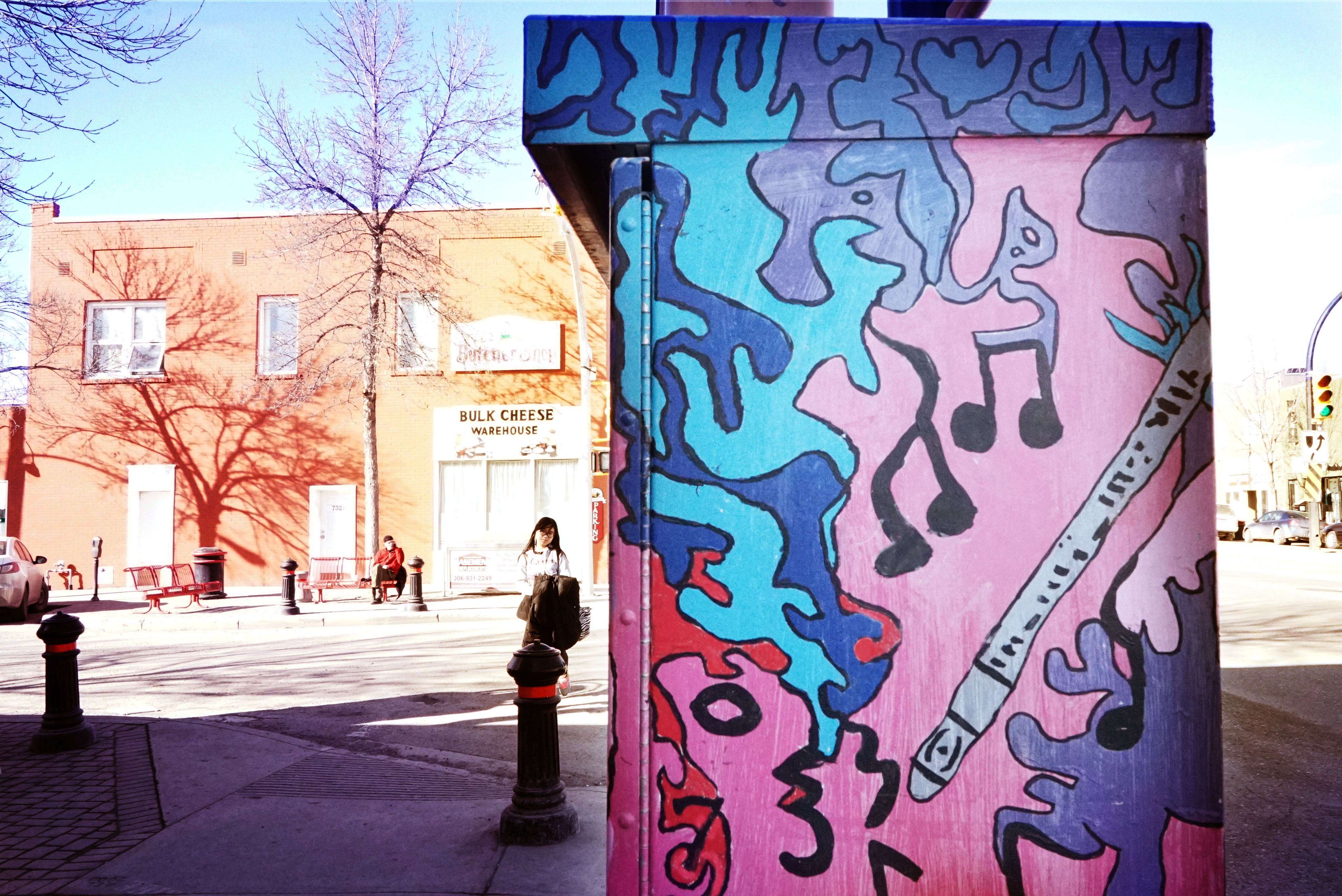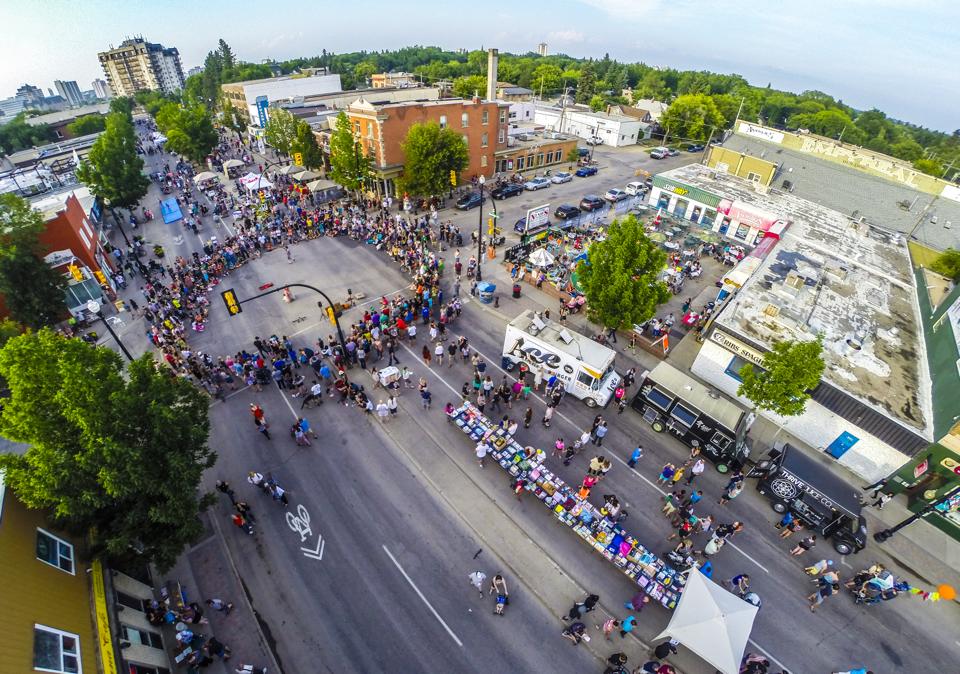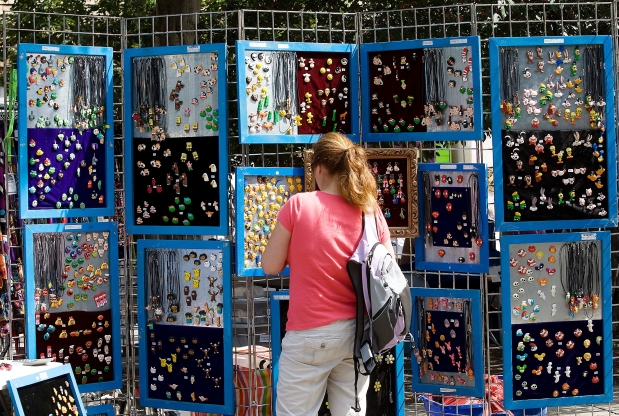BROADWAY THEATRE
Introduction
When you think of Broadway Avenue, often the first thing that comes to mind is the iconic image of the Broadway Theatre. A community driven, gentrified, small business with a friendly, local atmosphere, the Broadway Theatre was opened in 1946. It is a one-of-a-kind theatre in Western Canada, as it shows exclusively independent, foreign, and local cinema while also providing a venue for theatrical plays, film festivals, and concerts.
History
- The theatre was built in 1946 almost entirely by local businesses.
- The first film screened was Shine on Harvest Moon (1944). The theatre operated as generic movie theatre for the next thirty years.
- The theatre began hosting midnight movies and student films. When the neighbourhood began to decline, the theatre began showing adult films. By the mid-seventies, it operated as a predominately adult-movie theatre.
- In 1984, the theatre stopped showing adult-movies when the entire neighbourhood became gentrified. The Broadway Business Improvement District (BBID) was started in 1986.
- The theatre suddenly closed its doors in 1993 during the Fringe festival. It closed because the then owner had an outstanding debt to various movie distributers.
- Two weeks later the Friends of the Broadway Inc. was established as a non-profit organization. They purchased and reopened the theatre and still own it today.
The Theatre today
Since 1993, the theatre has been home to both cinema and live performances. The theatre is home to the Saskatoon Soaps improv-comedy troupe, the Saskatoon Fantastic Film Festival (previously known as the Darks Bridges Film Festival), and is an indoor theatre venue for the PotashCorp Fringe Theatre Festival. A community-owned organization, the Broadway Theatre promotes art and culture from Saskatchewan and around the world.
Bibliography
Fuller, Cam. 1993. 'Broadway To Launch New Era Next Week'. Saskatoon Star Phoenix.
Onbroadway.ca,. 2015. 'BBID - About Us'. Accessed February 2.
Saskatoon Star Phoenix,. December 4, 1946. 'The New Broadway Theatre'.
Ward, Caitlin. 2007. 'Changing Lanes'. Planet S.


